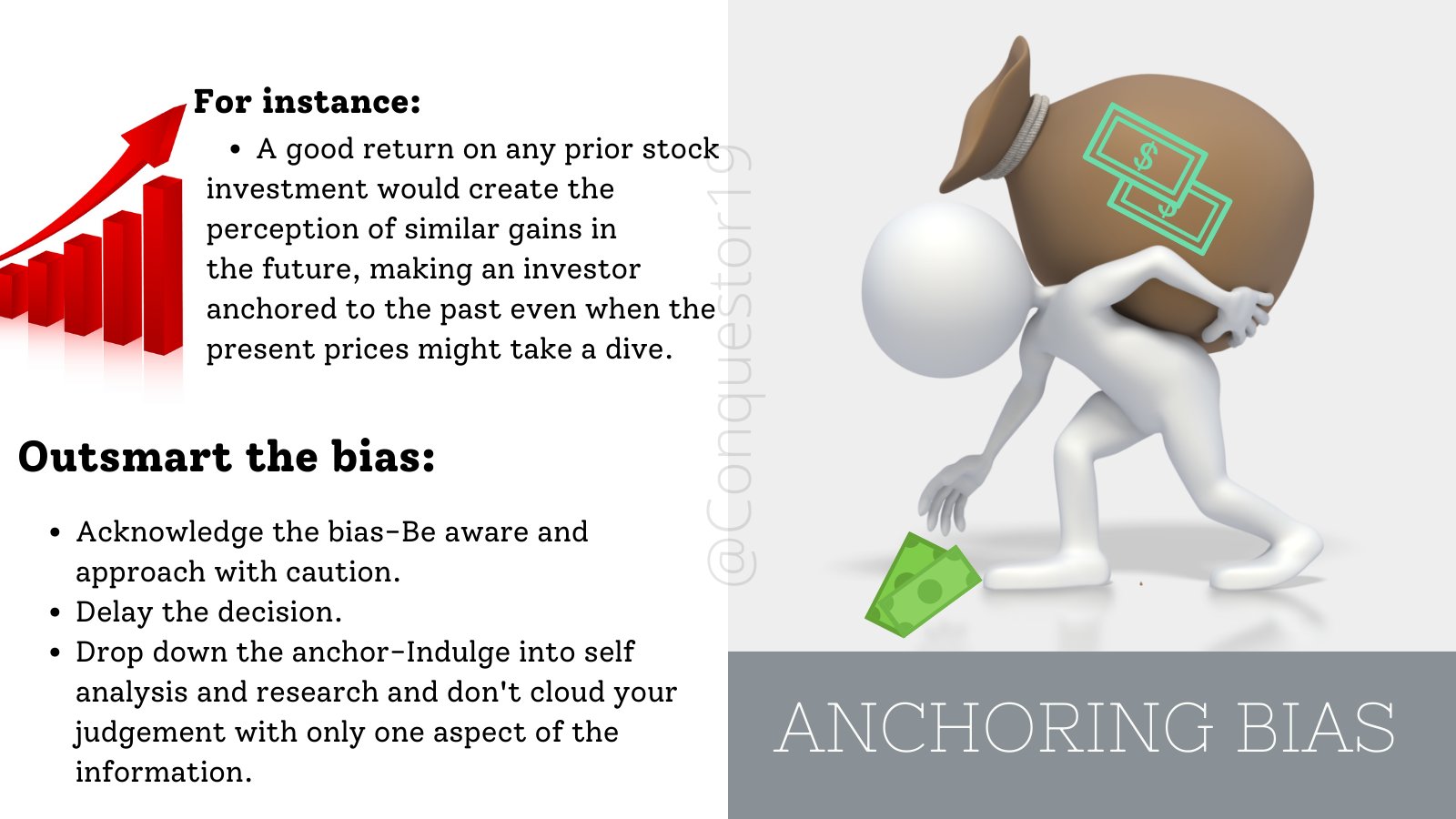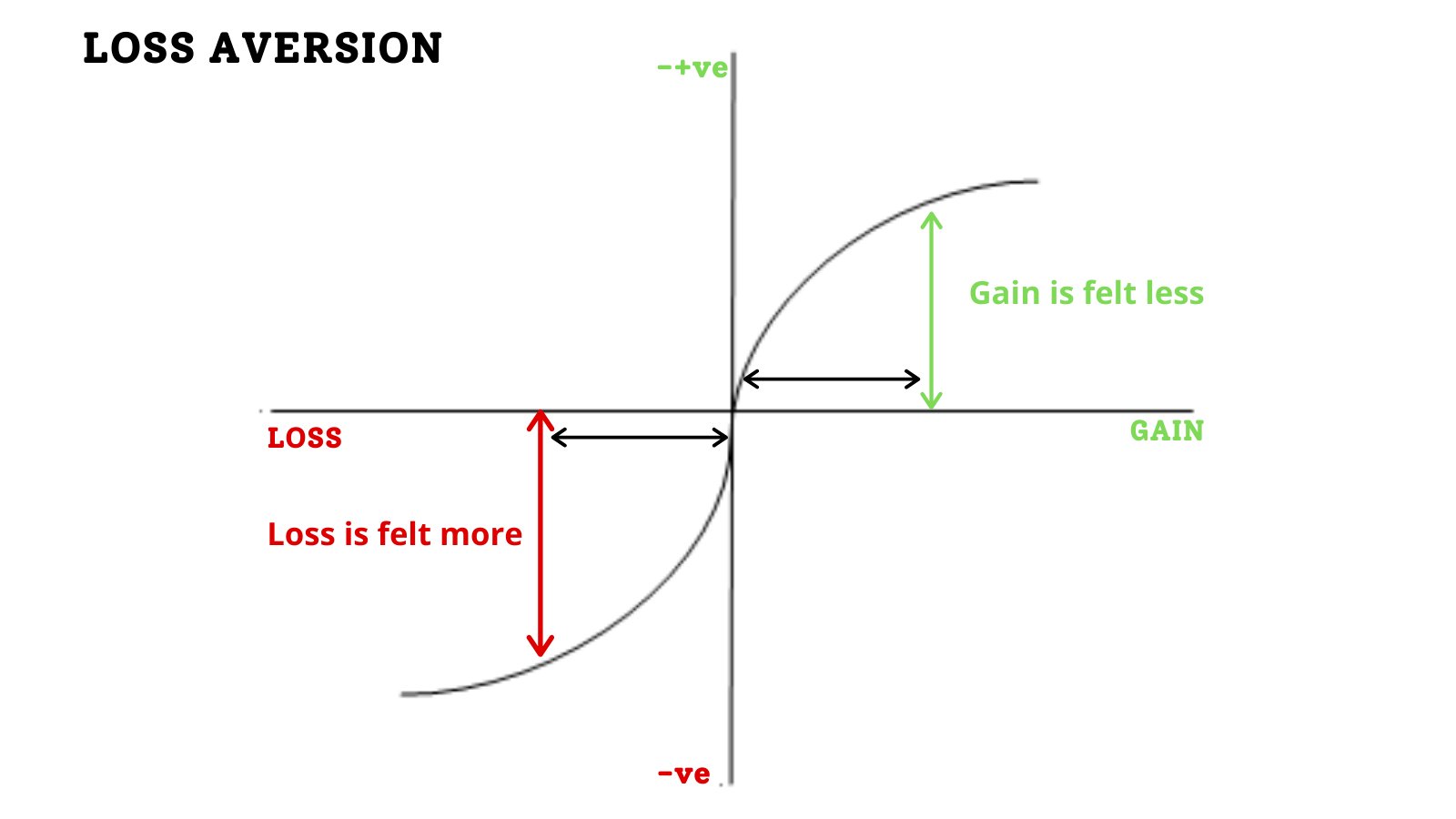Human psyche is incredible yet dangerous as we fall victim to it. It is very easy to cling to mistakes over and over again in the pursuit of a changed result. In the heat of the moment, we get confused and fall into the traps that we should be avoiding.
In investing, wrong perception, delusions can cost you handsomely. So Beware!
Trap 1:- Anchoring:
Describes the tendency to only rely on top piece of information and getting anchored to it while decision-making. It causes a lot of oscillation and hinders the decision-making ability.
For instance, you had a good return on a stock in the past, your perception on the future returns would be similar, even when the prices might take a dive.
Escape the trap:
- Acknowledge the bias
- Delay the decision
- Drop down the anchor

Trap 2:- Loss Aversion
Is the tendency of going to extreme lengths to prevent losses. Suppose we buy a stock for ₹100, and then it falls by10%. We are sitting on a loss. Human psychology doesn’t like encountering a loss-so we hold onto the stock hoping to make a profit on our decision. However, if there is bad news about the stock. it is more sensible to sell and minimize our losses.
Avoid Loss Aversion:
- Speak to a financial advisor
- Systematic trading plan
- Hedging the investment.


Trap 3:- Herding:
In simple words, Consider there is a riot and despite of it being worthy or not; people pledge to join it and follow without their own research. That’s exactly what herding is.
Herd instinct occurs when investors begin following the crowd instead of their own analysis. It is said to create bubbles or crashes in the financial markets due to panic buying or panic selling. Following the crowd can cause amplification of fundamentals.
Let’s say the price of stock ABC started escalating quickly and went beyond the intrinsic value. Because everyone is panic buying, you also decide to hop in but at a higher price. At this moment, Investors are not willing to buy and the stock collapses.
Avoid Herding:
- Make investments based on sound strategies.
- Don’t fall prey of escalating prices.
- Do your research.
Trap 4:- Superiority Trap:
The moment ‘confidence’ changes into ‘over-confidence’, Nothing remains. A lot if investors like to think that they’re better than others and this thinking precedes the reality and they’ve ended up losing fortunes. Feeling that you know more than others or than you actually do is a crucial mistake.
Someone with a Ph.D in finance may end up delivering the wrong perspective being clouded with superiority but on the flip side, A high-school graduate might have an amazing way with the markets.
Avoid Superiority trap:
- Learn from the mistakes of others. You can’t live long enough to make them all yourself.
Trap 5:- Pseudo-Certainty Trap:
When most people start to see their portfolios turn red, they often act out of desperation. They pile on risk to try and win it all back. This is a huge mistake. Most likely, it won’t pay off. Rather you’re risking it all.
Just as you can’t catch a falling knife. Projecting the fall and trying to cover up your loss, you might end up losing more.
Avoid Pseudo-Certainty trap
1. As mentioned in the chart below, Ride the trend and avoid when It’s against.

Trap 6:- Sunk Cost Trap
We’ve all been victims of the sunk cost trap at some point of time.
Ever sat in the movie theatre and realised that you’re not enjoying it but you refuse to walk away because you’ve paid for it.
Ever kept clothes in your closet that don’t fit you anymore and refuse to give them away simply because you put in a great deal of money into them.
Similarly, The sunk cost trap occurs when we’re holding onto a bad investment and refusing to sell it off. We see the stock plunging but try to average it out in the hope that the prices will eventually go higher.
Avoid Sunk Cost Trap :
- Set investment goals.
- Have a strict Stop-loss.
The bottom line is- It’s easier said than done. Human emotions can be very challenging but you’ve to take control of them or else you’ll end up falling prey of one of these traps and losing your hard earned money. Be aware and realistic about the investments you make.
I’m not emotional about investments. Investment is something where you have to be purely rational and don’t let your emotions affect your decision making – just the facts.”
-Bill Ackman






